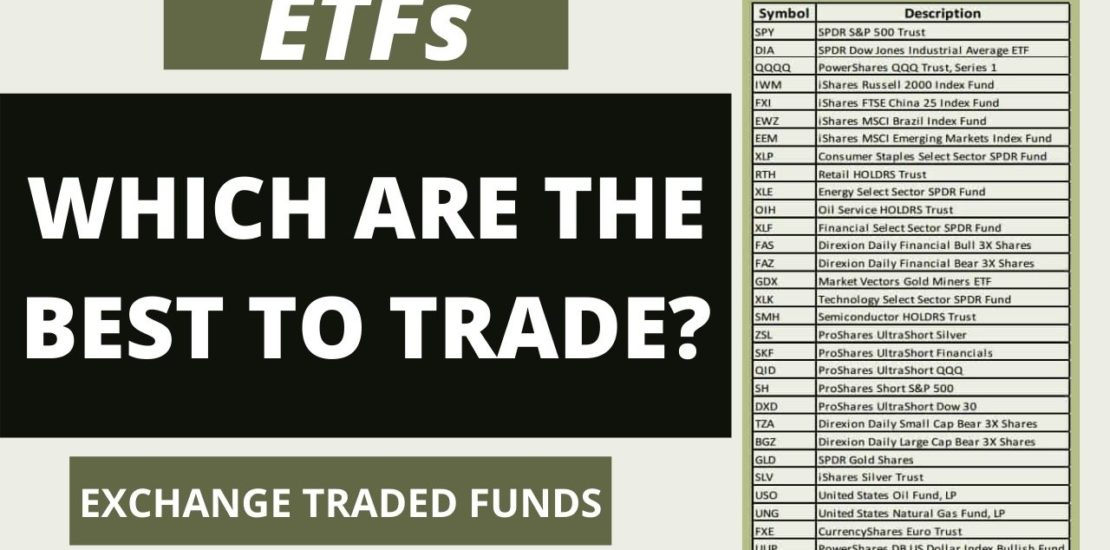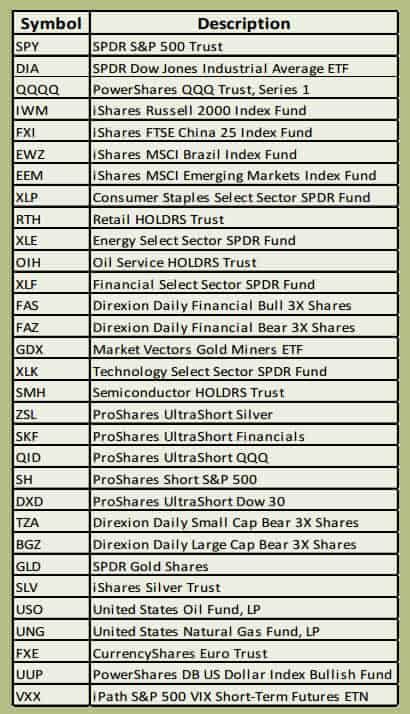- March 27, 2021
- Posted by: Shane Daly
- Category: Trading Article

Over the past few years, one of the most impressive growth stories has been the rise of Exchange Traded Funds.
What Is An ETF?
An ETF is an investment fund traded on stock exchanges, much like stocks. An ETF holds assets such as stocks, commodities, or bonds and trades at approximately the same price as the net asset value of its underlying assets over the course of the trading day.
With their growing popularity among investors, the number of available ETF’s has expanded tremendously. There are now over to 1900 available ETF’s available on the market. You can find them based on major market index products, different market sectors, commodities, and currencies.
This gives traders a quick way to diversify their investments.
ProShares Are My Favorite Development
One of the most exciting developments in the world of exchange traded funds has been the creation of the ProShares products.
ProShares are products that allows a CFD Broker and traders to take a bearish stance on the markets while actually buying an ETF. These products follow the price of various market indexes and sectors but with an inverse price relationship. As the markets go down the inverse products go up in value.
This gives traders with retirement accounts, which are usually limited to the buy side of the market, the ability to take a short position by actually buying a product.
ProShares also offer leveraged ETF’s. These are products that follow the prices of index products and sectors but move at a 2 to 1 ratio of the underlying. This allows traders to make more money quickly with a small move in the markets.
How To Choose Your List Of Exchange Traded Funds
With such a large universe of ETF’s it can be difficult to know which ones are good candidates to trade. I have gone through and documented some of my favorites to trade. I will be honest, it takes a lot of time (and knowledge) to put a list like this together so be warned.
- I am looking for some basic criteria when analyzing the universe of ETF’s. The items that I look for are liquidity, good range, and optionable products.
- I want to make sure the products that I trade have good volume. Some of the newer ETF’s have very low volume which can make them difficult to trade. At a minimum I want to see an average daily volume of 250,000 shares.
- I also want to take a look at the charts to make sure that I’m trading products that move. I don’t want to trade an ETF that only makes a few decent moves each year.
- I like to trade options so I want to make sure I’m looking at products that have liquid options. I want open interest of at least 300 contracts across the strikes that I’m looking to trade.
In the following chart, I have created a broad list of ETF’s that track different indexes, sectors, commodities, and currencies that can be used as a sample watch list.

This Exchange Traded Funds list was created with the active trader in mind. I am trying to capture the short term swings in these products.
Average holding time for a position on these products is anywhere from 3 days on out to 3 weeks. If you combine these short term moves with some basic options strategies, it is very possible to see returns of over 100%.
Easier Way To Find The Best ETFs For You To Trade
It can take a lot of work for you to narrow down the list of available ETF’s to a specific list of names that you can reference throughout the year as different markets and sectors heat up and cool down. You need a systematic approach to doing so to ensure that you’ve covered all the available details and that you are trading viable Exchange Trade Fund names.
To help with this incredibly time consuming task, how about piggybacking on our ETF research?
True Story:
How “Do-It-Yourself” ETF Investing Saved Money & Increased Returns…..
Mark Soberman, the Netpicks owner, was spending a large chunk of change having someone manage his investment income. Whether he was up or down in returns, the fees would still apply.
Mark fired his money manager and took over the task himself (and already has eclipsed returns the investing “professional” served up while saving money on fees).
While Netpicks is geared to help the individual be an active trader for income, he realized that Netpicks should take a strong stance towards the vital long term portfolio management that is designed to make our later years stress free. The numbers do not lie: over 25 million seniors in the United States are “economically insecure“.
In the words of Mark…..
“Hundreds of millions are spent every year on management fees for returns that do nothing to secure the financial future of people like you and I.”
….with those words, the Netpicks ETF Investor was born.
The NetPicks ETF Investor strives to teach you how to empower yourself to manage your long-term portfolio. Using low cost Exchange Traded Funds, and allocating your capital to the best sectors is the objective.
Nobody has more of an interest in your future than you do so why leave it in the hands of someone who gets paid even if you have negative returns?
The truth is that you can do a better job at managing your money than the “professionals”.
Mark has made it his mission to help people break away from money managers who make their living on the backs of people like you (whether they lose your money or not) and has extended a special invitation to use the exact research and analysis we successfully use internally….at no cost.
You can visit the Netpicks ETF Investor here, enter your email address, and get on the road to taking your future into your own hands.

